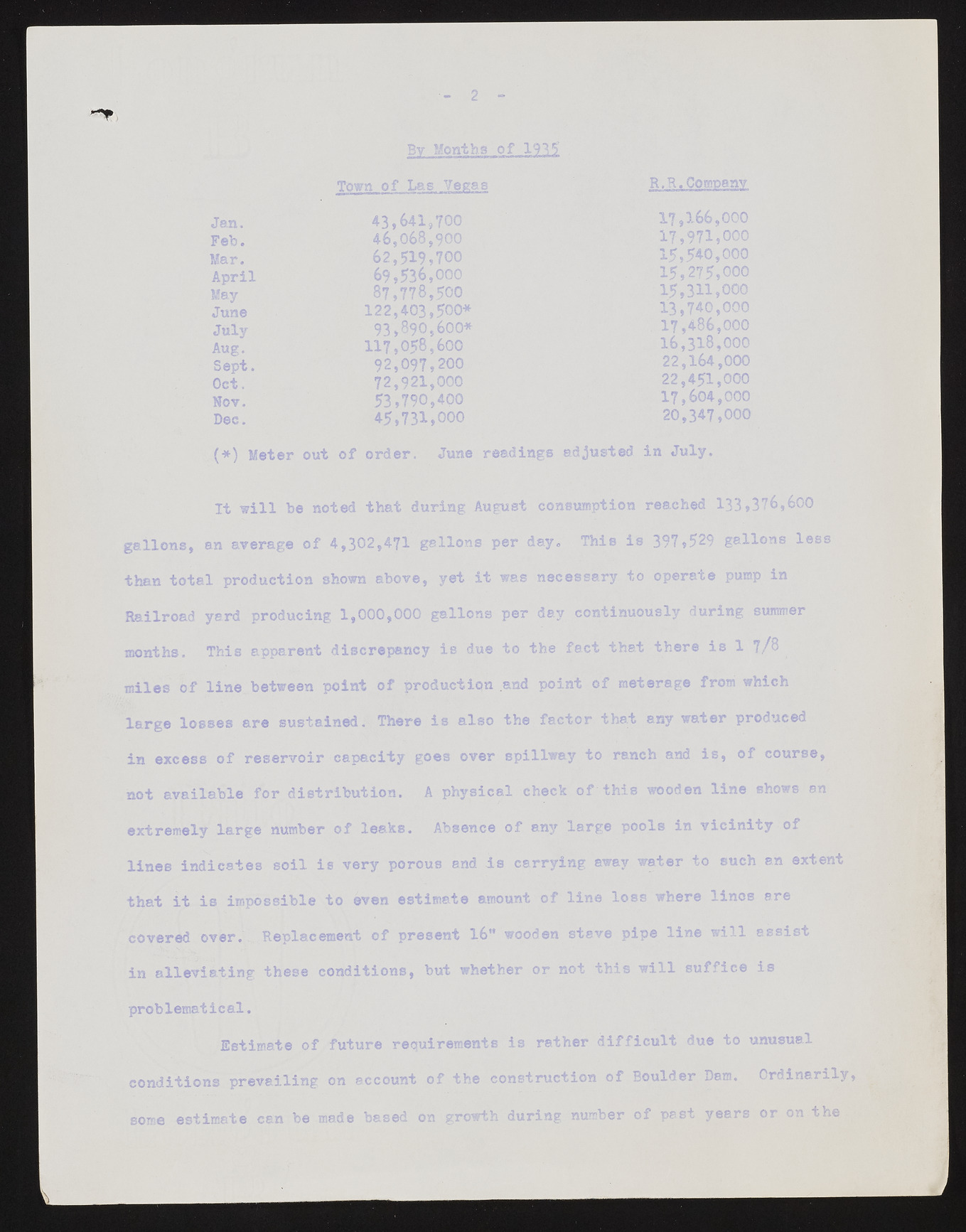Copyright & Fair-use Agreement
UNLV Special Collections provides copies of materials to facilitate private study, scholarship, or research. Material not in the public domain may be used according to fair use of copyrighted materials as defined by copyright law. Please cite us.
Please note that UNLV may not own the copyright to these materials and cannot provide permission to publish or distribute materials when UNLV is not the copyright holder. The user is solely responsible for determining the copyright status of materials and obtaining permission to use material from the copyright holder and for determining whether any permissions relating to any other rights are necessary for the intended use, and for obtaining all required permissions beyond that allowed by fair use.
Read more about our reproduction and use policy.
I agree.Information
Digital ID
Permalink
Details
Member of
More Info
Rights
Digital Provenance
Publisher
Transcription
By Months of 1935 Town of Las Vegas R.R.Comoanv Jan. 43,641,700 1 7 ,166,000 Feb. 46,068,900 17,971,000 Mar. 62,519,700 15,540,000 April 69,536,000 15,275,000 May 87,778,500 1 5 ,3 X1,000 June 122,403,500* 13,740,000 July 93,890,600* 17,486,000 Aug. 1 1 7 ,058,600 1 6 ,318,000 Sept. 92,097,200 22,164,000 Oct. 72 ,921,000 22,451,000 Nov. 53,790,400 17,604,000 Dec. 45,731,000 20,347,000 (*) Meter out of order. June readings adjusted in July. It will be noted that during August consumption reached 133*376,600 gallons, an average of 4,302,471 gallons per day. This is 397*529 gallons less than total production shown above, yet it was necessary to operate pump in Railroad yard producing 1,000,000 gallons per day continuously during summer months. This apparent discrepancy is due to the fact that there is 1 ?/8 miles of line between point of production and point of meterage from which large losses are sustained. There is also the factor that any water produced in excess of reservoir capacity goes over spillway to ranch and is, of course, not available for distribution. A physical check of this wooden line shows an extremely large number of leaks. Absence of any large pools in vicinity of lines indicates soil is very porous and is carrying away water to such an extent that it is impossible to even estimate amount of line loss where linos are covered over. Replacement of present 16" wooden stave pipe line will assist in alleviating these conditions, but whether or not this will suffice is problematical. Estimate of future requirements is rather difficult due to unusual conditions prevailing on account of the construction of Boulder Dam. Ordinarily, some estimate can be made based on growth during number of pest years or on the

